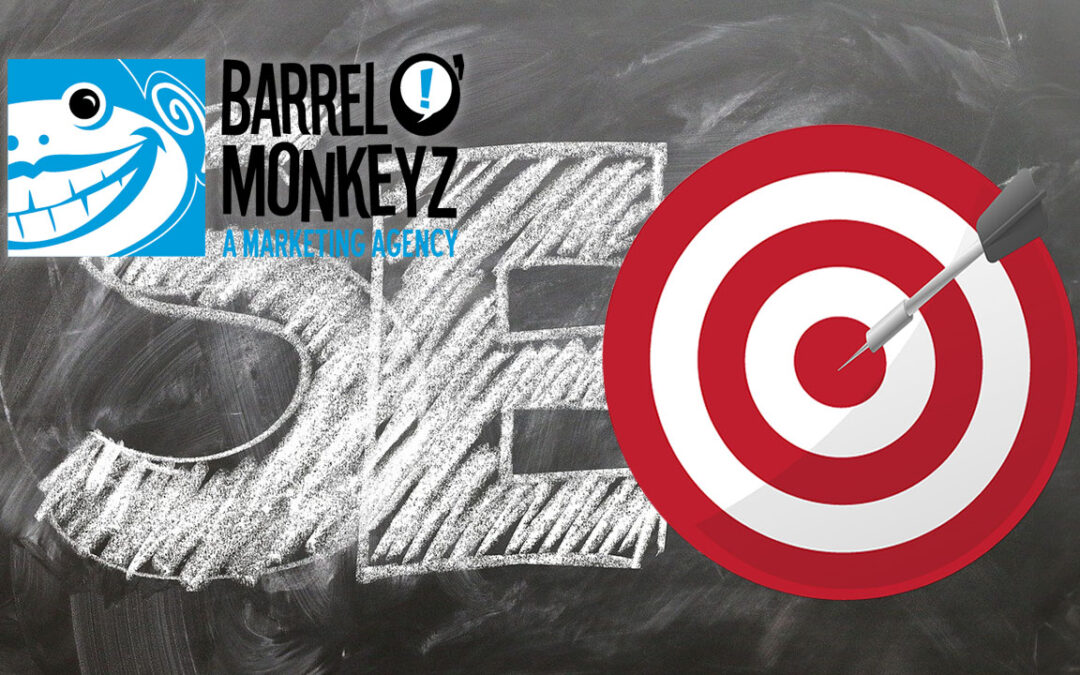A common misconception about effective search-friendly marketing is that you need to pack your content full of keywords so search bots will take notice. Sure, your content needs to contain trending keywords and phrases your target buyers will use to find you, but not to the point incoherence (or annoyance) to human readers.
Think about it this way: what good will it do for a search engine to rank your online content highly, only for it to miss the mark with your human readers?
Getting people to find your site is only the first step; converting them into paying customers, newsletter subscribers, loyal blog readers, etc., is your ultimate goal—and to do that the words you use need to resonate with them, not Google’s latest search algorithm.
Know Your Audience
Effective Search Marketing is more than simply getting people to your site and driving traffic. You want people to stick around once they get there, have a good first impression, and either buy your product or service then or come back for more. The key is to deliver great content that visitors to your website can’t get anywhere else.
Start with getting to know your audience. Review your customer records, review analytics, use online digital marketing tools, poll your staff, and/or do a customer survey to answer these questions:
- Who are they?
- How old are they?
- Where are they?
- What are their pain points?
- How do they make purchase decisions?
- What words and phrases do they use to find you?
Now make a “profile” of your ideal customer. Keep this persona in mind as you develop content for your various platforms.
Content with Value
Consumers react when the content they read aligns with their wants, needs, and desires (see my decade-old blog on “Content is King,” which is still relevant). Give them the kind of content they want, something they can’t get elsewhere (such as an FAQ on how your active wear is a good match for their needs, or a step-by-step video demonstration of how to best pack their valuable tech in your new, stylish laptop backpack) and they will be more likely to visit your website, blog, or social media pages repeatedly. If they like it enough, they’ll tell others, too, spreading the word about your product or service by sharing your content.
Consequently, your blog, online articles, eBooks, landing pages, website copy, visual content (graphics and video), press releases, emails, social media profiles, etc., all need to be written with this same audience in mind and the same objective: to deliver content that’s on-target and highly valued.
Is Your Online Content Connecting?
How do you know if your online content is working as intended?
Your web analytics will be able to tell you if your search marketing efforts are having an impact. Compared to baseline data prior to boosting your search marketing efforts, is website traffic higher? Is social media activity increasing? Are people talking about your product or service through online forums and communities? Are they more engaged?
The volume of your sales activity, user registrations, phone traffic, etc., will tell you if your online content is compelling people to answer whatever call to action you have in place. Are sales increasing, decreasing, or flat? Is revenue growing? Are your social media and online communities growing?
If, after 10 to 12 weeks, you are seeing little change in web traffic, social media activity, or conversions of prospects into customers, you may want to revisit the keywords and phrases consumers use to find your website, as well as the content you are delivering to them. Sometimes a tweak in strategy is all that’s needed to get the results you want.
- Review referrer data for your website and other analytics to see where visitors actually come from.
- Analyze what keywords your competitors are using.
- Brainstorm keywords and content improvements with staff and colleagues.
- Create an email survey and send to current customers, asking them how they searched for or found your website.
- Put together a series of focus groups of your customers/target customers and brainstorm keywords and messaging with them. Have the focus group members tell you what they need to hear to want to buy your product or service.
- Conduct split tests (sending different messages, calls to action) to different segments of your target audience to determine which gets the better response. Does your audience respond better to longer headlines or shorter ones? Do certain action words get them to respond better to your calls-to-action? Does your audience prefer visual to written content?
Remember, it’s not enough to write good content packed with lots of keywords. In today’s online world, if you build it, they may come . . . but they won’t’ necessarily buy. You need to know what content connects best with your target audience, generate lots of it on a regular basis, and continuously fine-tune your approach over time.
Let’s Connect
Let Barrel O’Monkeyz act as your seasoned, outsourced marketing and creative team. Our barrel is full of talent and creative minds ready to prove we don’t just monkey around! Contact Barrel O’Monkeyz Today

